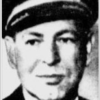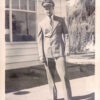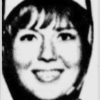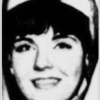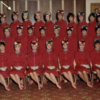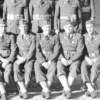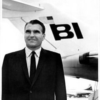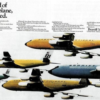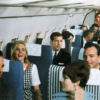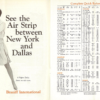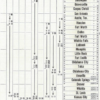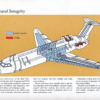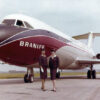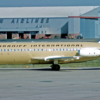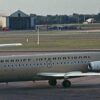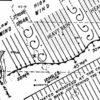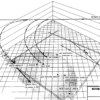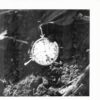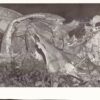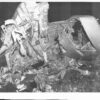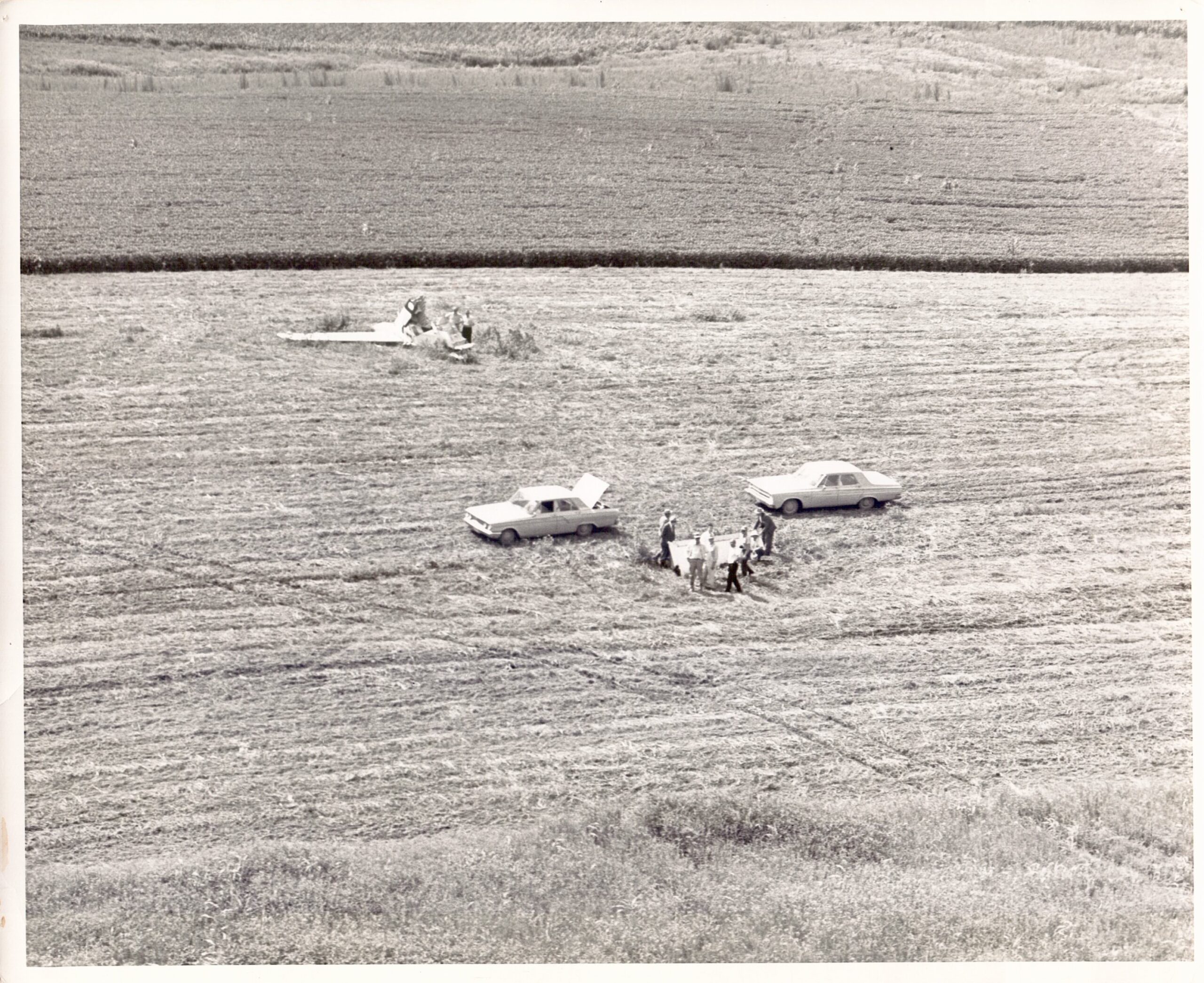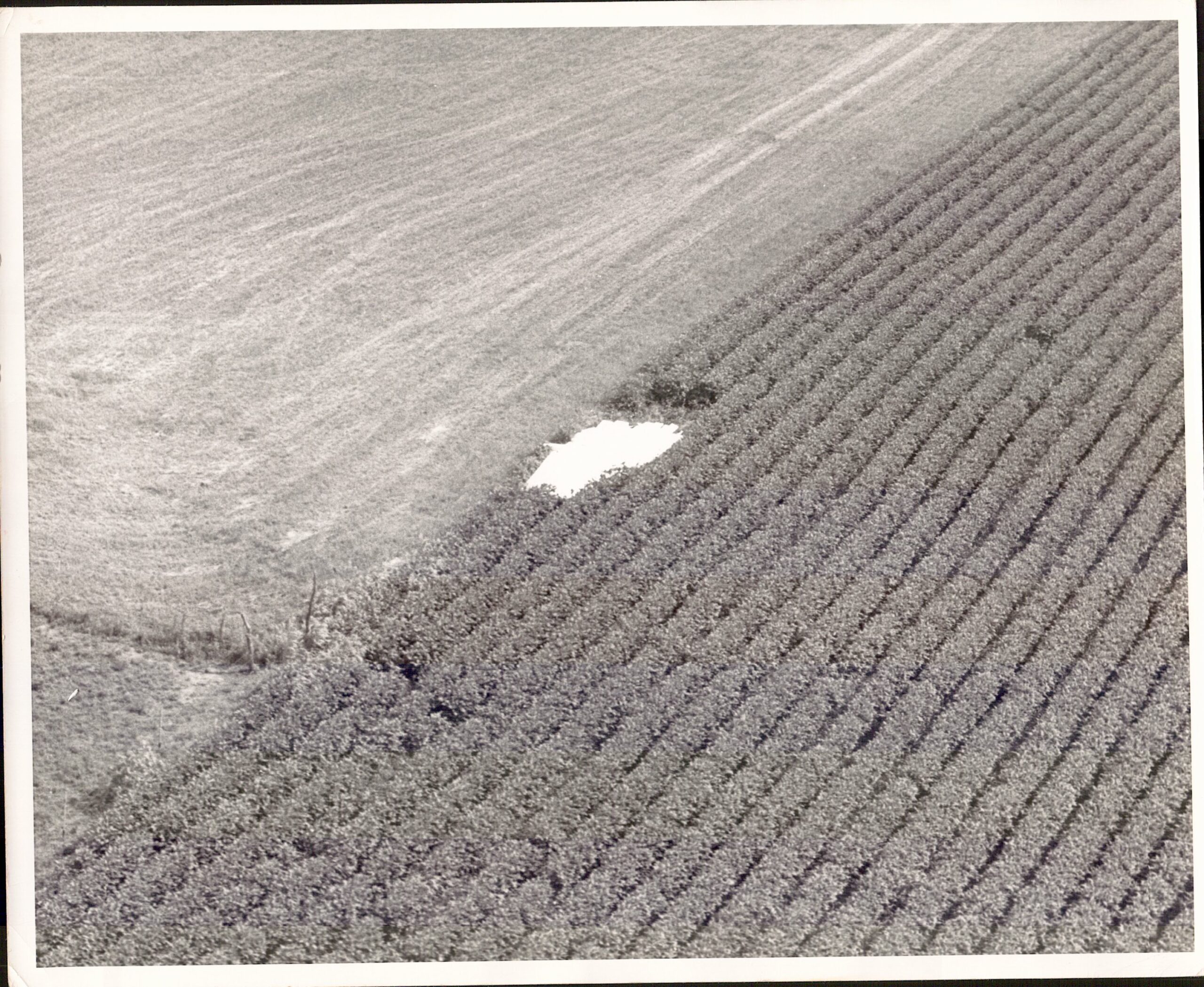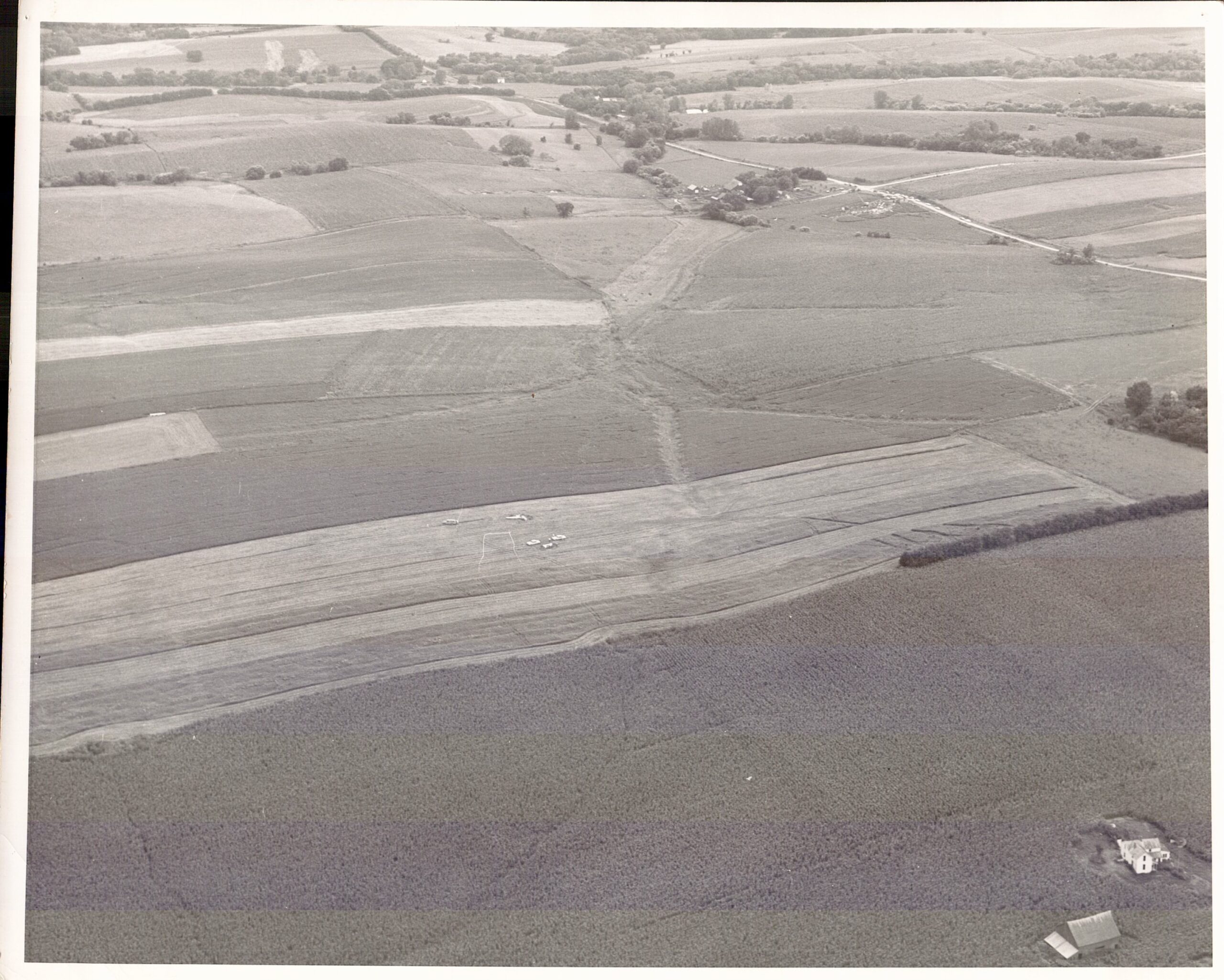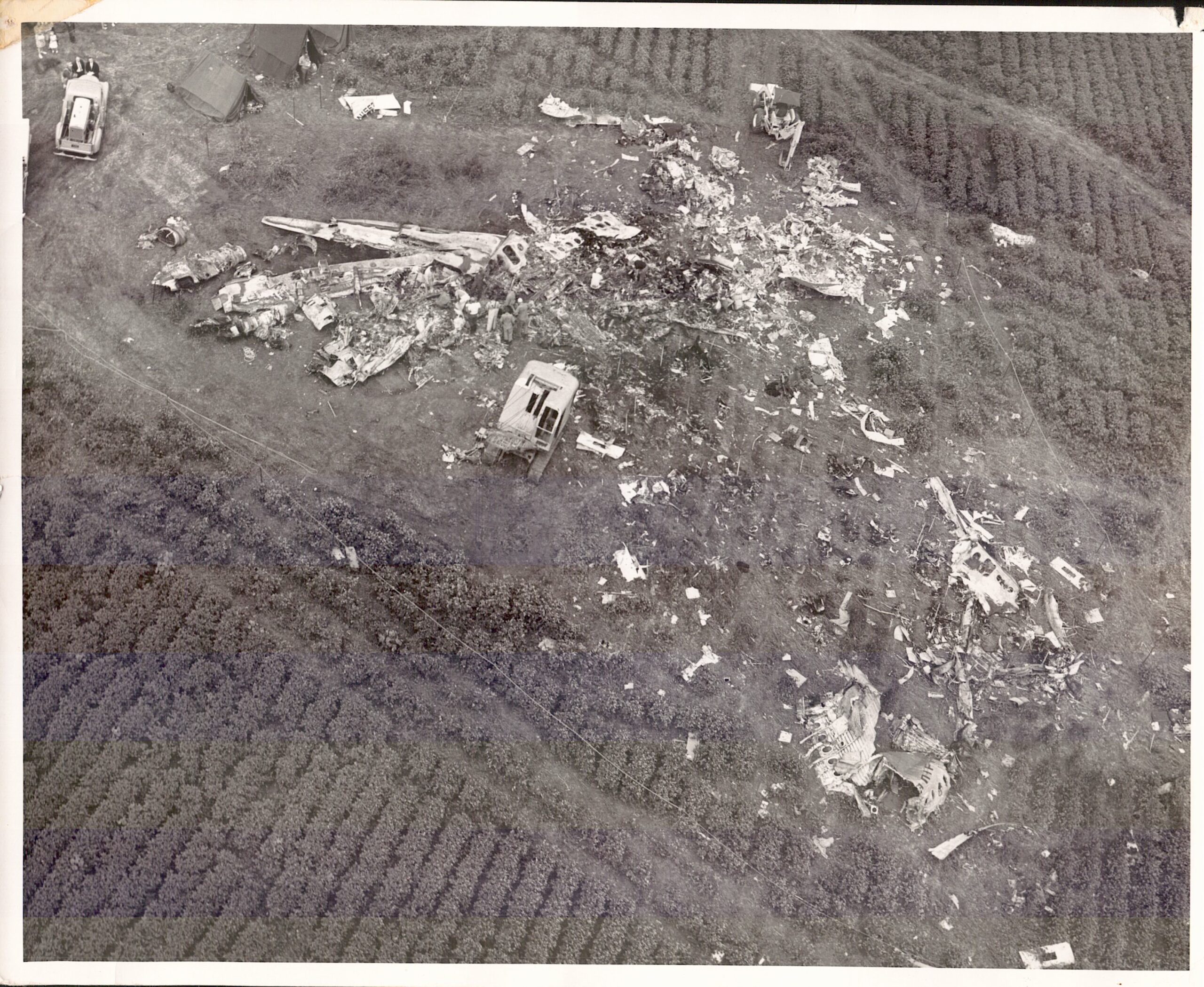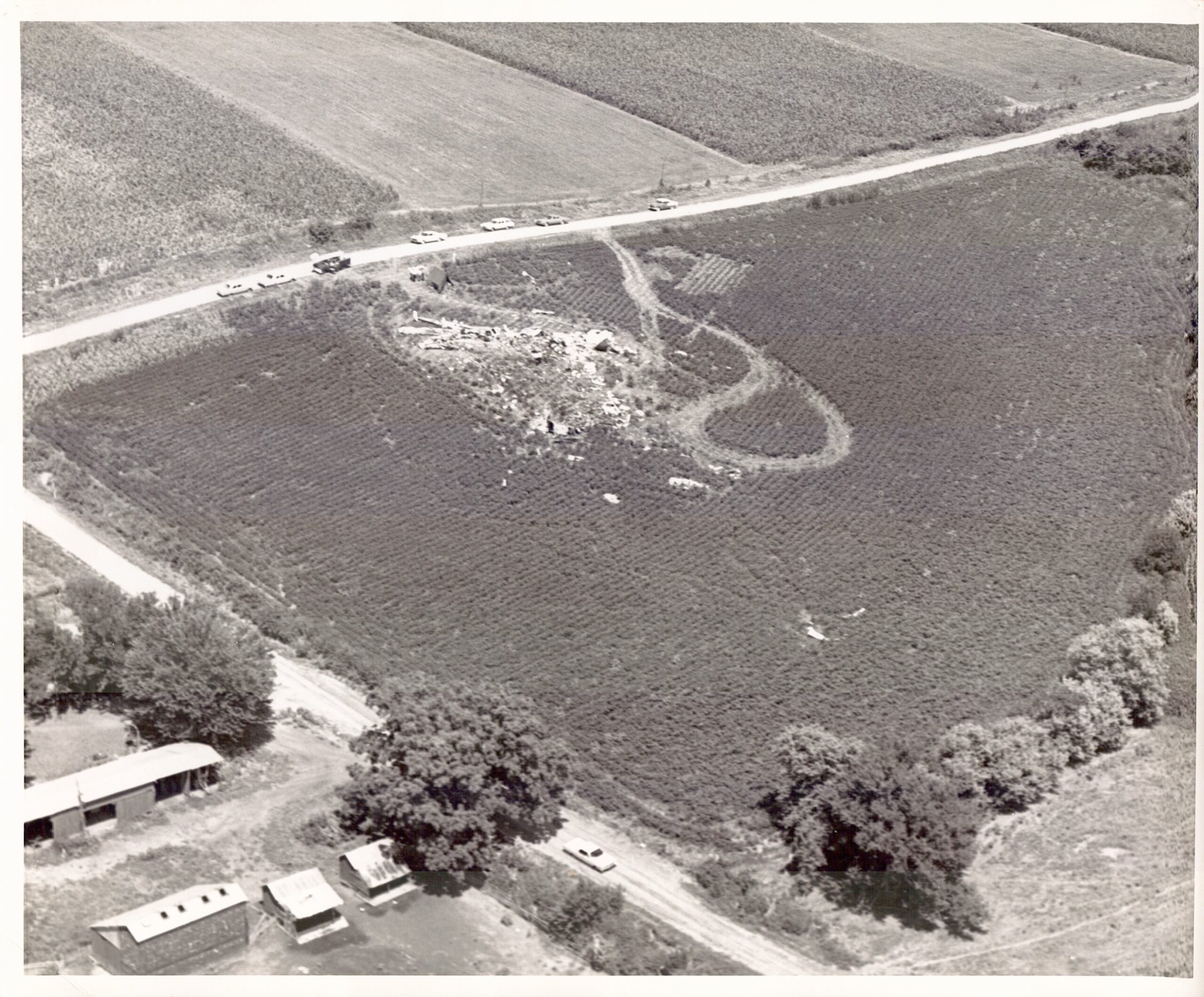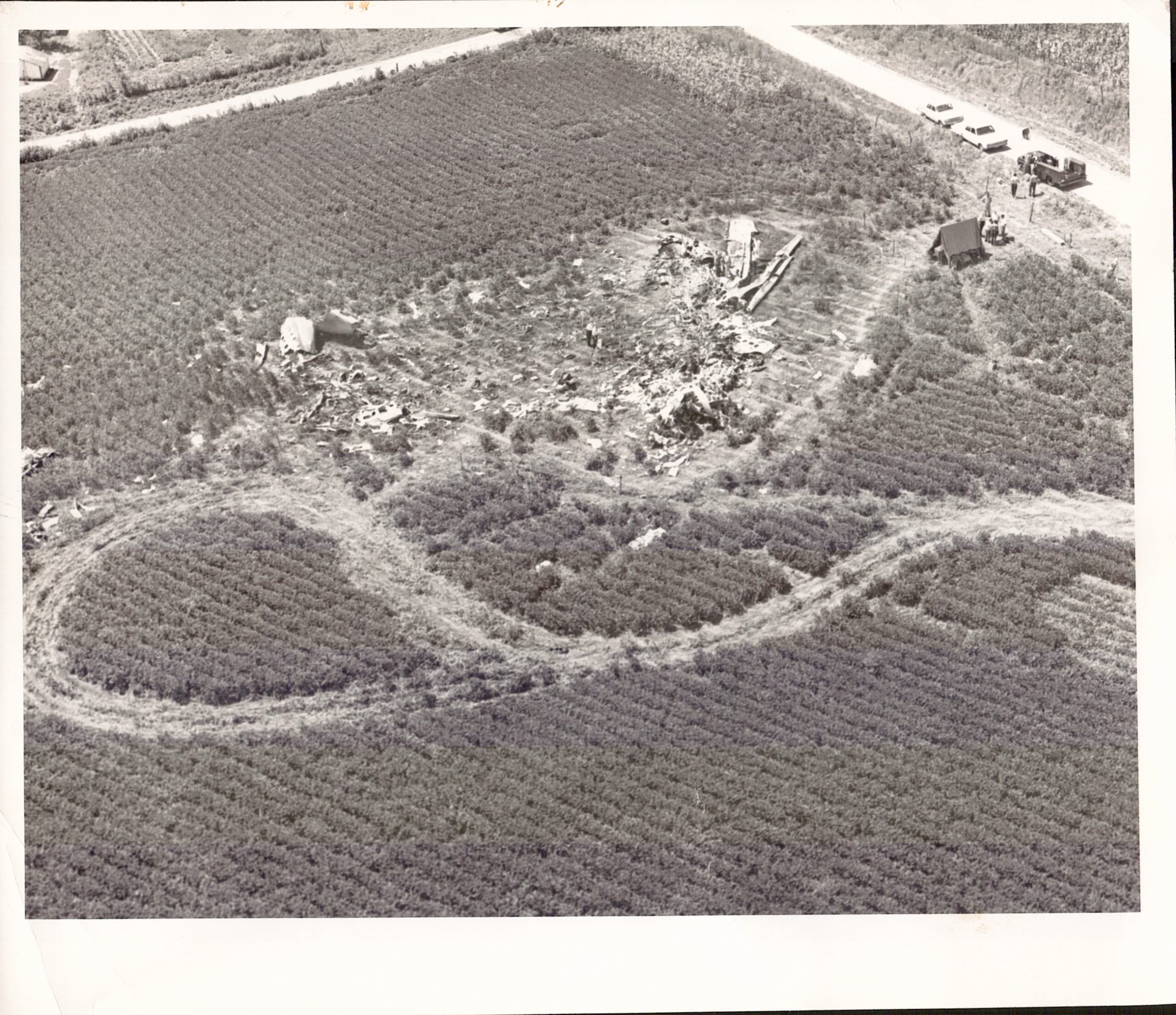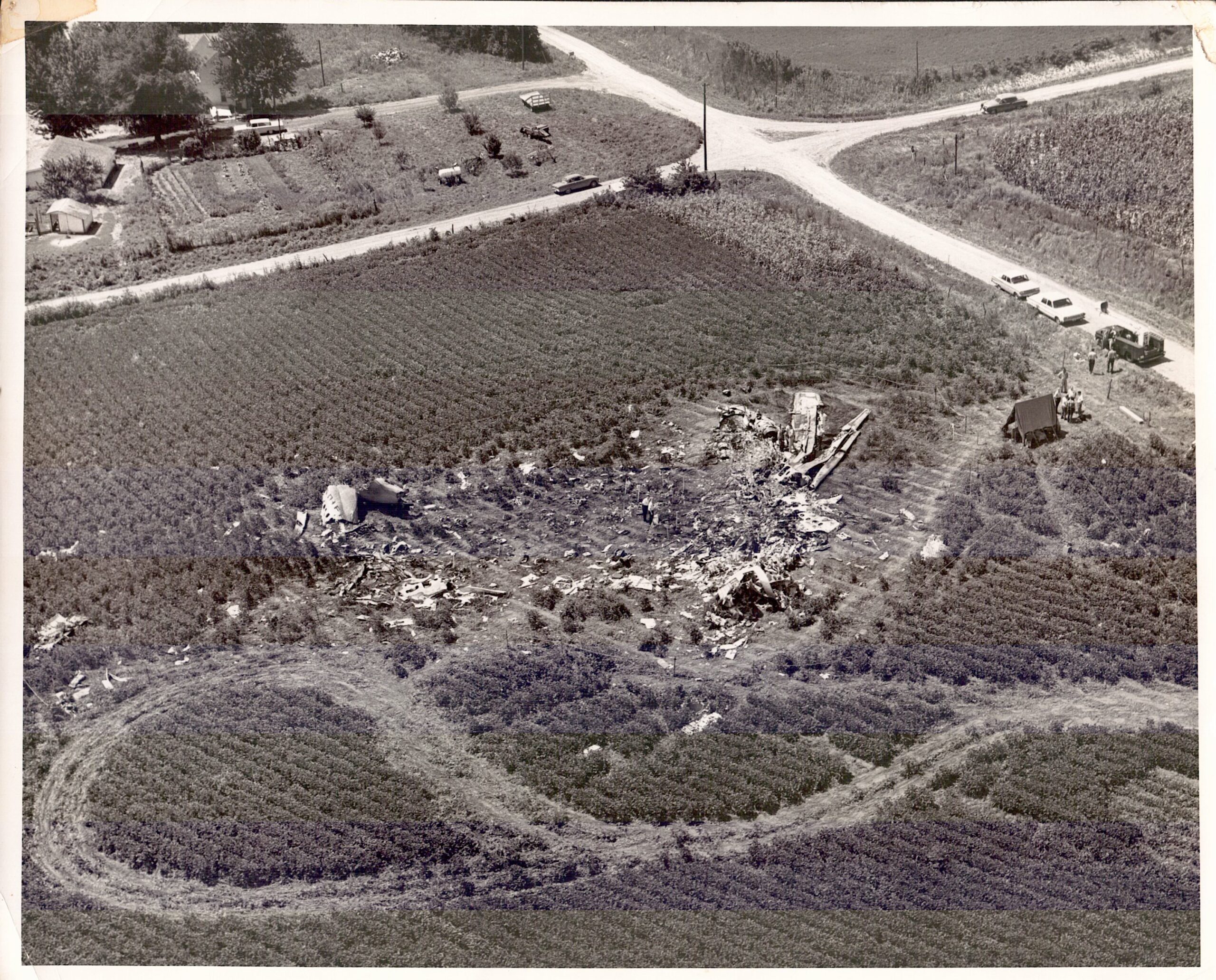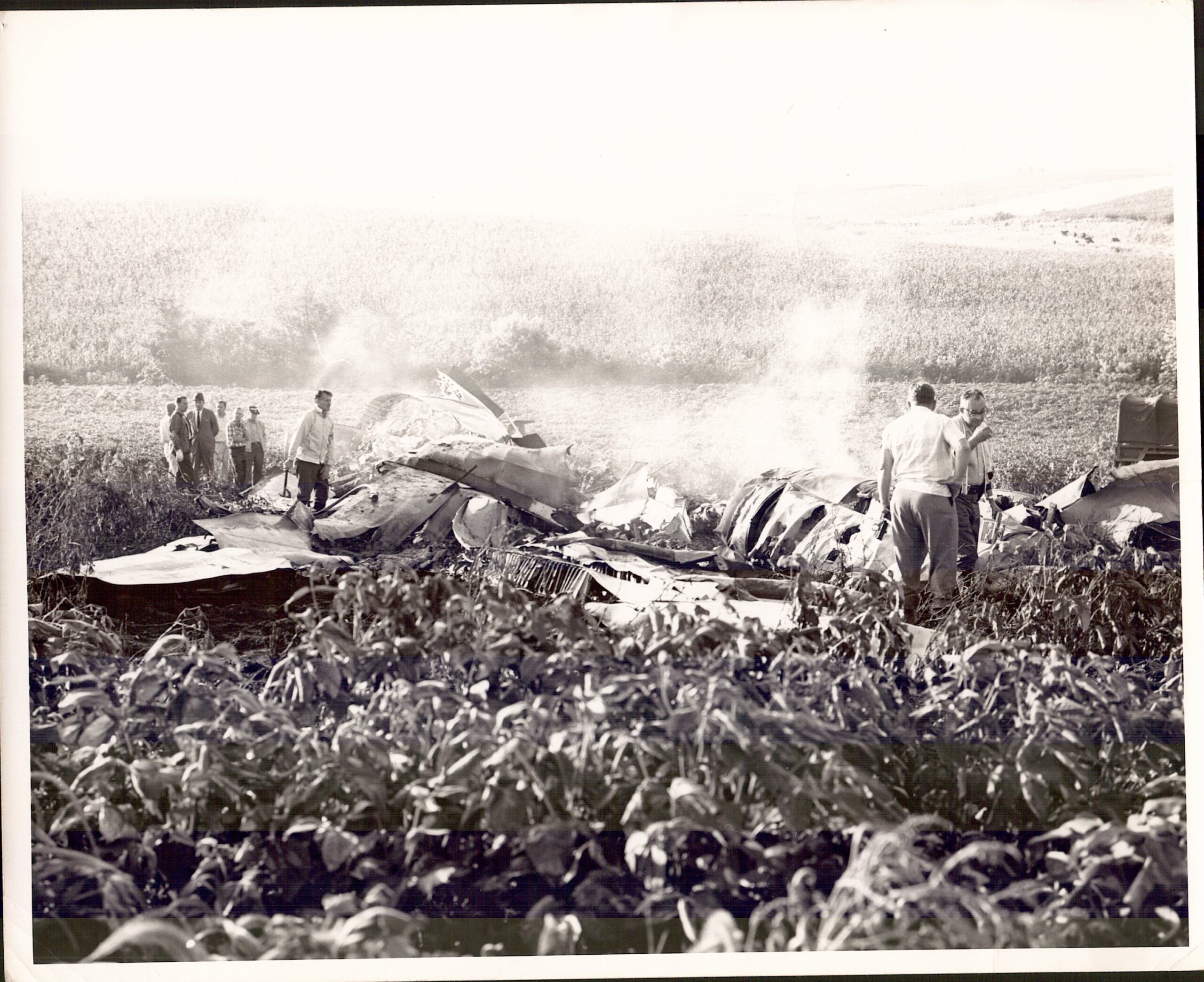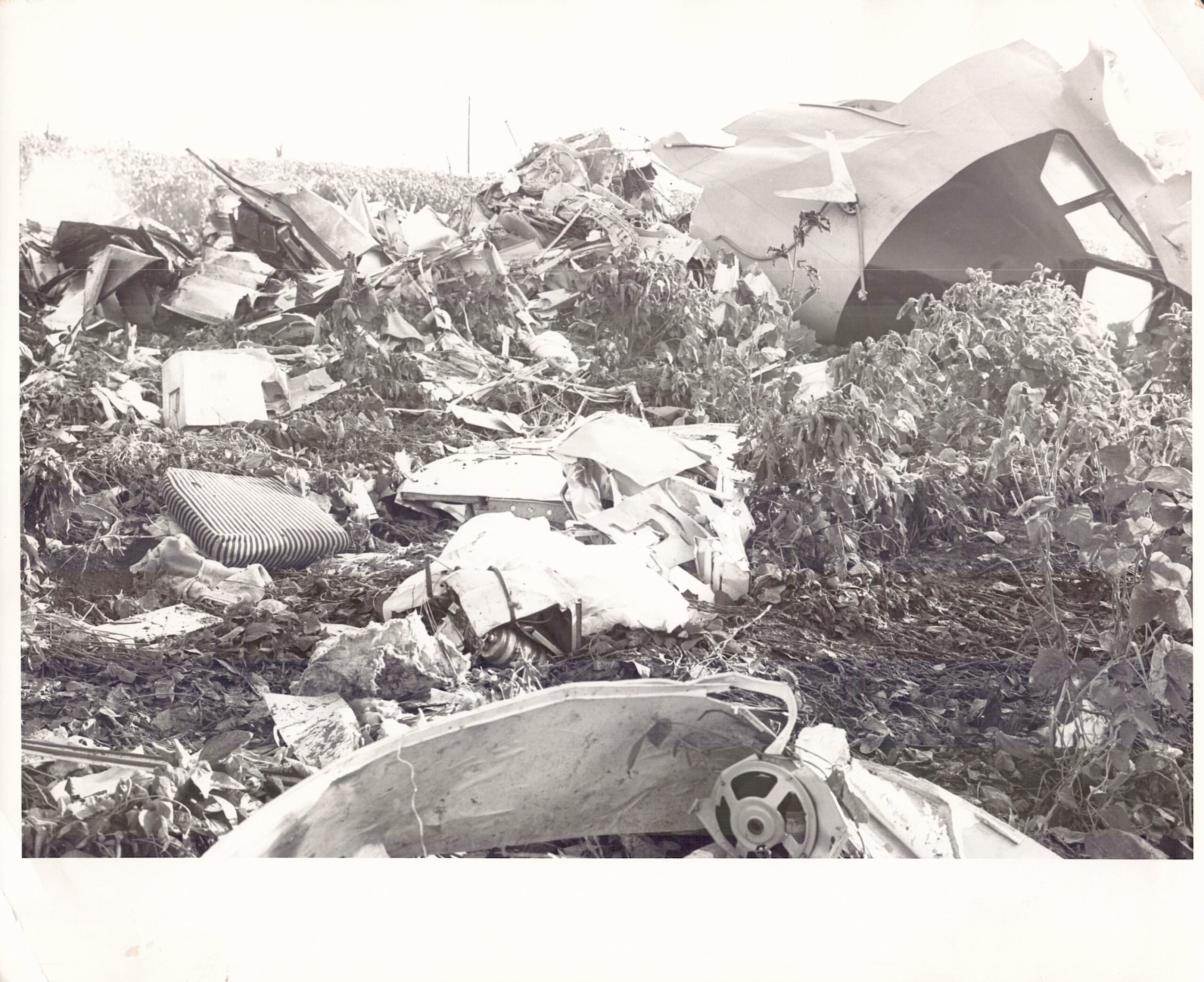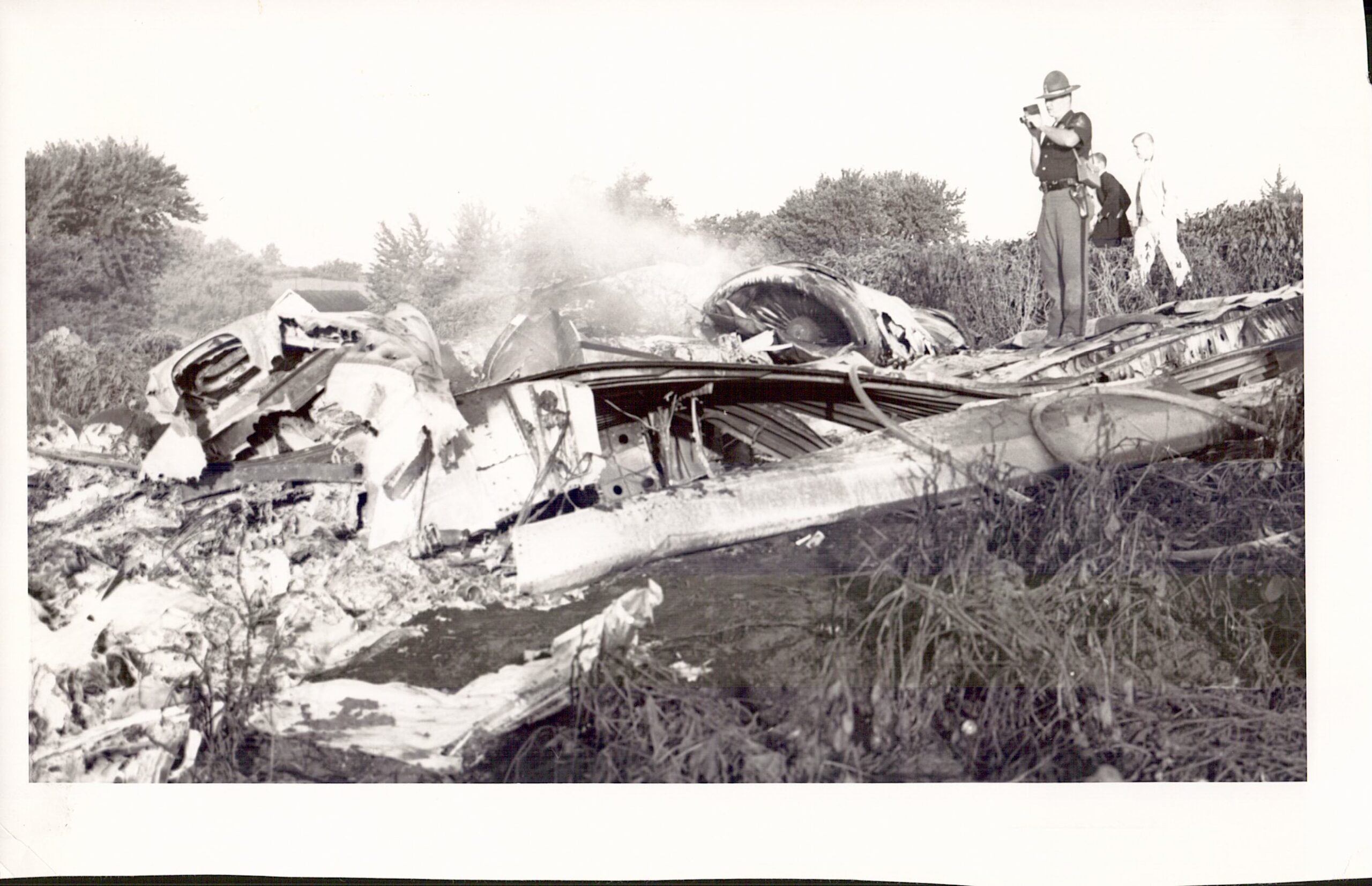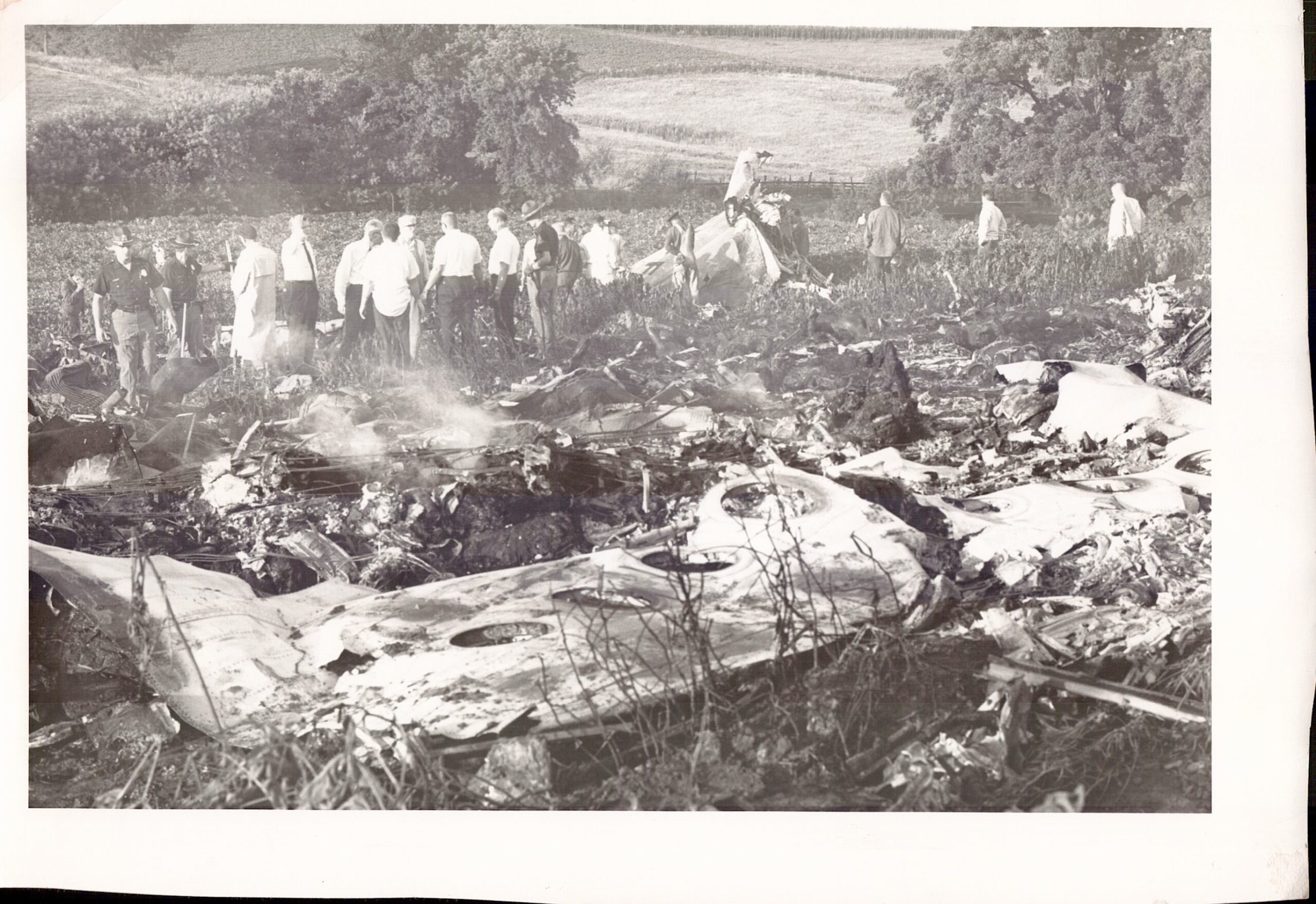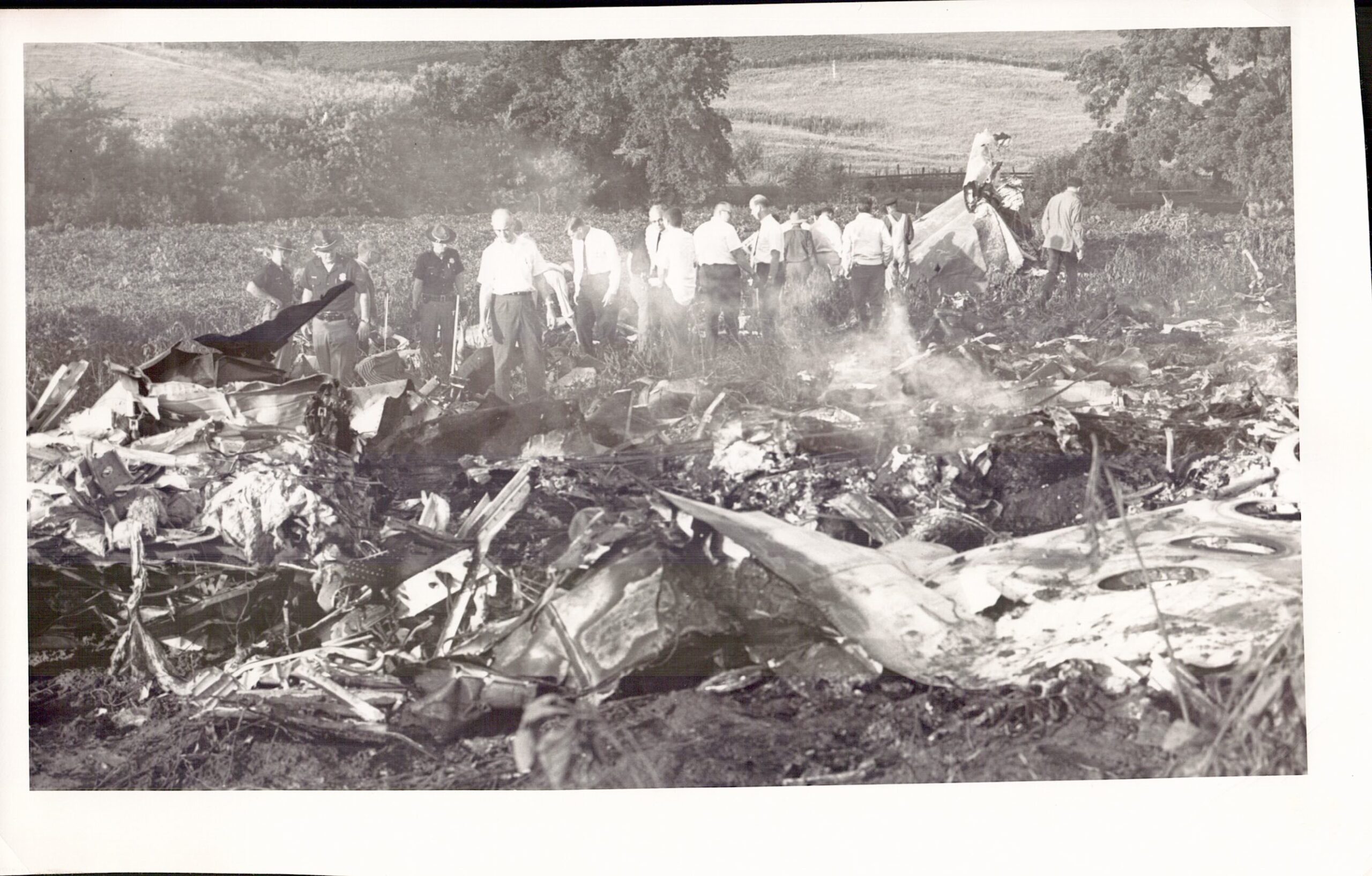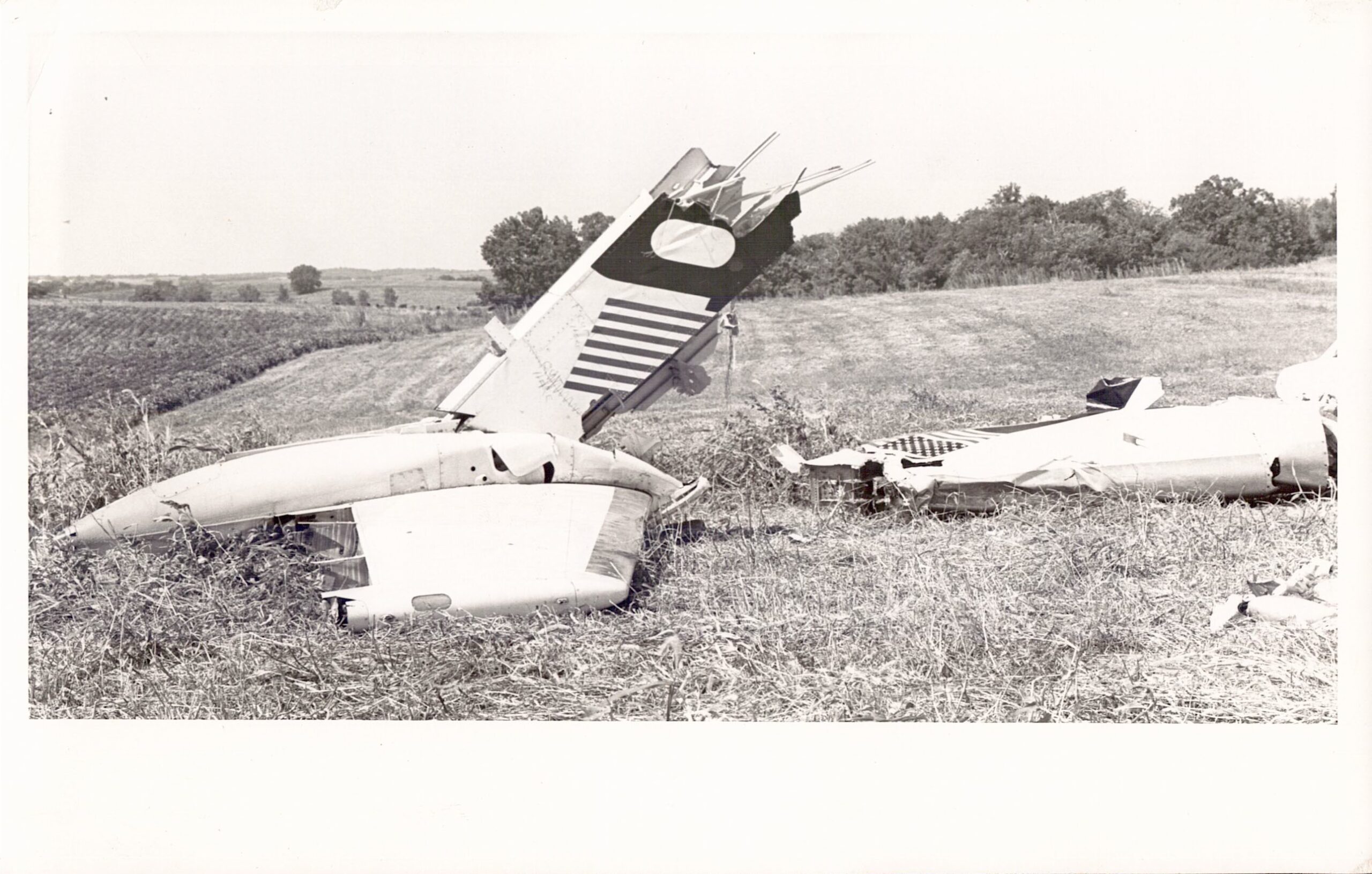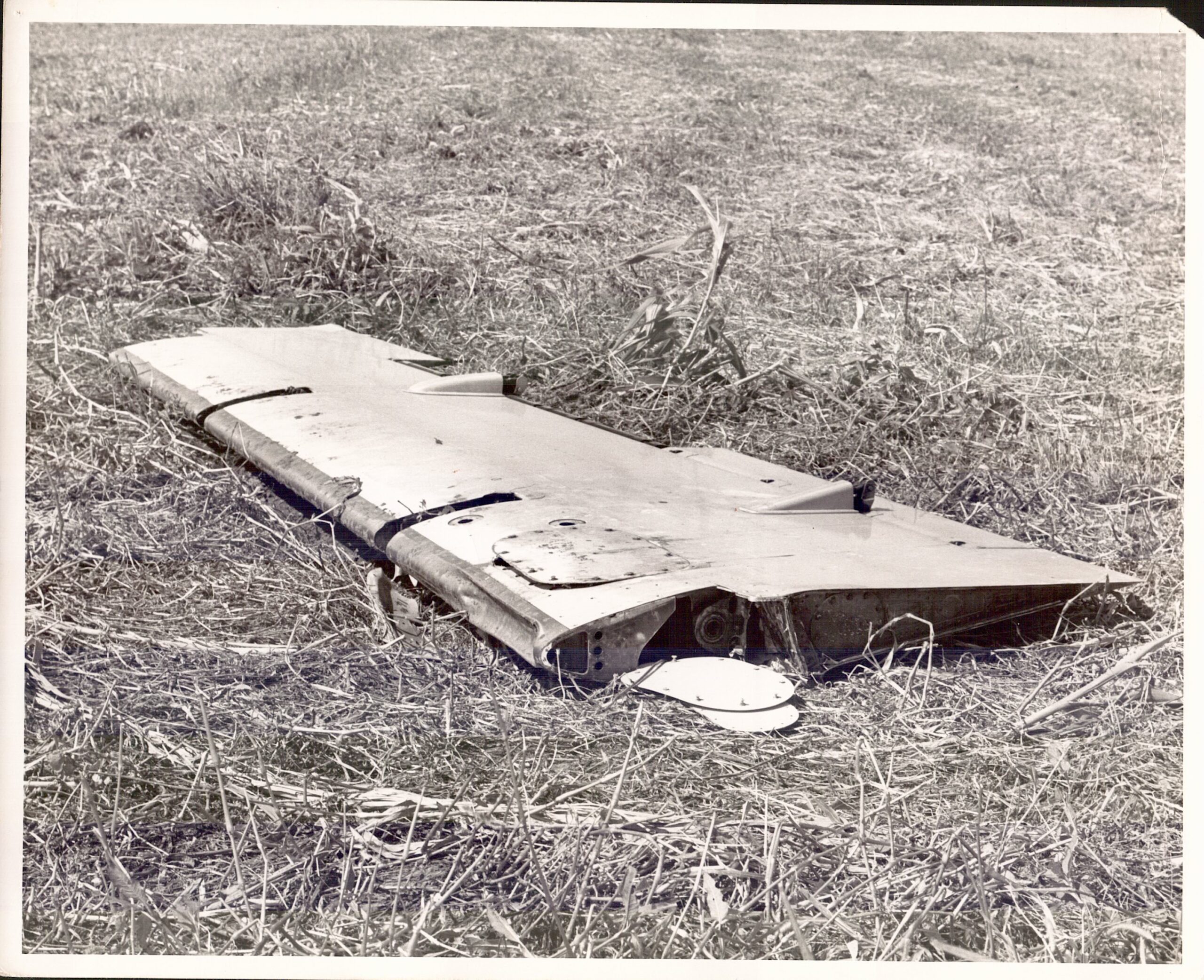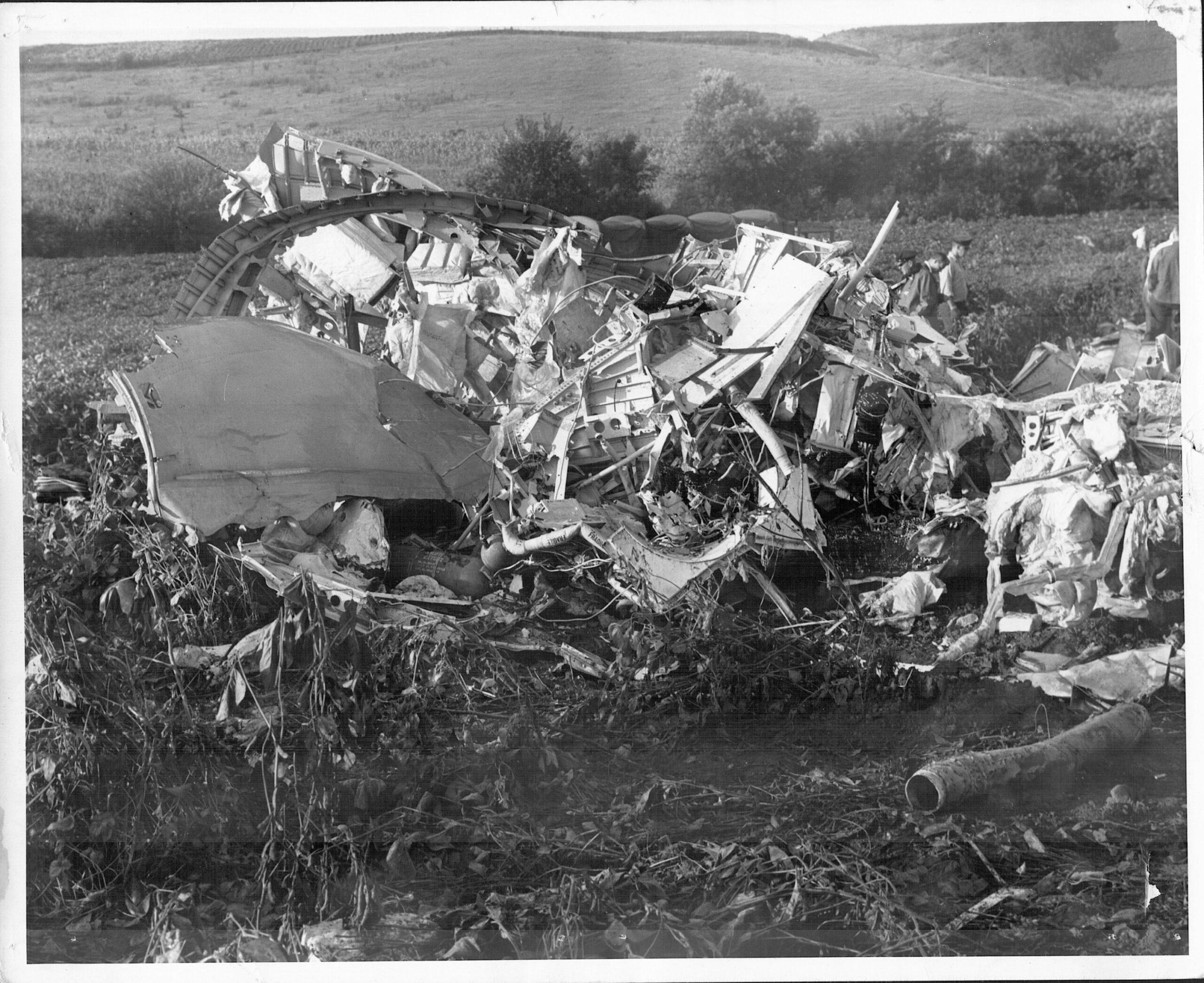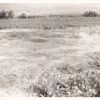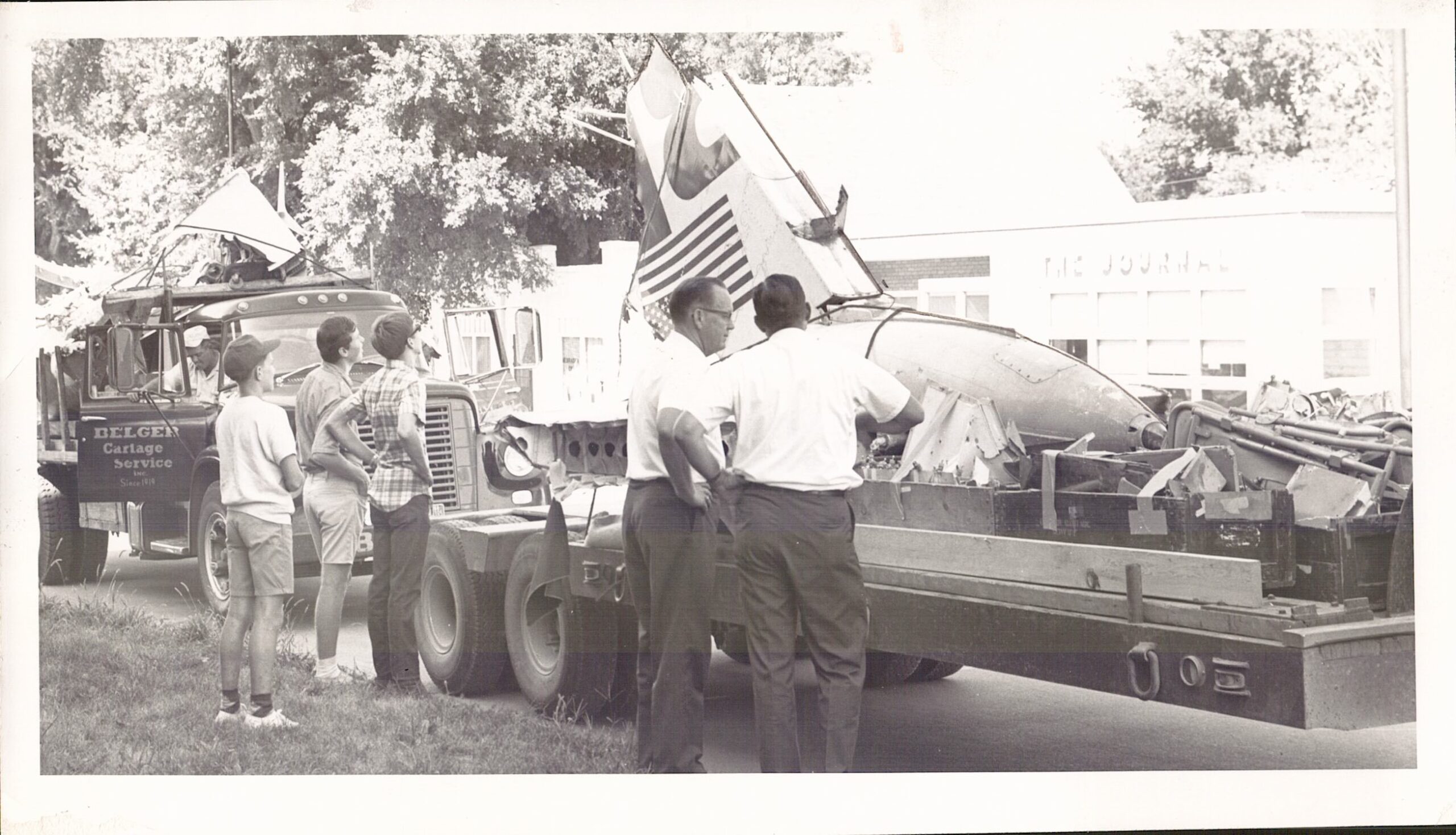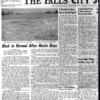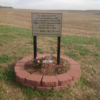Documents, Notes, Photos, Ephemera, Research Relating to the Crash of Braniff International Airways Flight 250 near Falls City, NE, on 6-Aug-1966.
[Note: Some files are large and will take longer to access on slower internet connections.]
Presentations & Local Coverage
The 50th anniversary of the Braniff 250 disaster was commemorated in Falls City, NE, on 6-Aug-2016. Here is my keynote presentation and one of the local television coverage stories:
• 50-Year Commemoration Presentation | Shown in Falls City, 6-Aug-2016.
Slides accompanying a presentation given by Steve Pollock at the Richardson County History Museum:
1. View in Web Browser (.html)
2. Download PDF (.pdf) [Note: Embedded videos will not play in this version; either view the .html version or download one of the following files:
3. Download older Powerpoint (pre-2005) version (.ppt)
4. Download current Powerpoint (2005-Present) version (.pptx)
5. Download Apple Keynote version (.key)
• News Channel Nebraska’s coverage of the 50th Commemoration Event | Falls City, NE, 6-Aug-2016.
Braniff Internal Documents
• Passenger/Crew Funeral Details:
Braniff kept these status reports to track everything from who in the victims’ families were informed and when, to funeral homes, positive identification status, and other miscellaneous details.
[Courtesy University of Texas at Dallas-Richardson Braniff Archives.]
• 1. Larry J. Bosted, 19; Andrew Dewitt Broadfoot, 54; Nancy Anne Chamblin, 18. | Detailed status update #6a as of 10 a.m. on 10-Aug-1966.
• 2. Susan Carol Chamblin, 15; Danny R. Cox, 18; Ronald Deines, 19. | Detailed status update #6b as of 10 a.m. on 10-Aug-1966.
• 3. Jeanae (Jean) Carolyn Duerksen, 22; Ava Dyer, 46; Donald L. Eschbach, 46. | Detailed status update #6c as of 10 a.m. on 10-Aug-1966.
• 4. Kenneth Eskelinen, 25; Donald Ferrero; Leslie David Foster, 41. | Detailed status update #6d as of 10 a.m. on 10-Aug-1966.
• 5. Patricia Gilbertson, 21; Lyman Monroe Graeber, 61; Lottie Gummers, 46. | Detailed status update #6e as of 10 a.m. on 10-Aug-1966.
• 6. Mary Kay Hamm, 16; Susan R. Hamm, 17; Charles E. Howard Jr., 21. | Detailed status update #6f as of 10 a.m. on 10-Aug-1966.
• 7. Russell Hudson, 19; Patricia Jacobson, 21; William O. Johnson, 23. | Detailed status update #6g as of 10 a.m. on 10-Aug-1966.
• 8. Cheryl Lyn Sanders Jordan, 21; Bohdan Kowtaliw, 18; Adolph Mayer, 64. | Detailed status update #6h as of 10 a.m. on 10-Aug-1966.
• 9. Eugene P. McConnell, 18; Opal Mills, 51; William Murphy, 19. | Detailed status update #6i as of 10 a.m. on 10-Aug-1966.
• 10. John H. Paul, 44; Garrett Redington, 32; Grace Roettger, 56. | Detailed status update #6j as of 10 a.m. on 10-Aug-1966.
• 11. Donald Smith, 39; Virginia Tejada; Charla Ward, 16. | Detailed status update #6k as of 10 a.m. on 10-Aug-1966.
• 12. Robert Welter, 19; Frank Wilson, 40; Donald Wright. | Detailed status update #6l as of 10 a.m. on 10-Aug-1966.
• 13. Ruth Kuhr, Mitchell Kuhr, Capt. Donald Pauly, F/O James Hilliker, Hostesses Sharon Hendricks and Ginger Brisbane. | Detailed status update #6m as of 10 a.m. on 10-Aug-1966.
Maps, Diagrams

• Air Traffic | Tracks of Flights in the Area when Braniff 250 was destroyed:
1. Tracking Map is an approximation based on NTSB/FAA data.
On this map you will see:
• A red line representing the flight track of Braniff flight 250 between KMCI and the crash site near Falls City, NE.
• A black line representing an American Airlines Convair 580 twin-engine propeller flight between KOMA and KSTJ.
• A purple Line representing Braniff flight 234, originally traveling KSTL-KDSM, but was diverted down to KMCI when approaching front made weather too hazardous to proceed to Des Moines. The flight landed safely in Kansas City.
• A blue line representing Braniff flight 255 from KOMA to KMCI. This flight diverted due east after departure then flew due south to Kansas City. It encountered very rough turbulence and discussed this with flight 250’s flight crew.
2. NTSB graphic representation of the one-mile square area of farmland near Falls City, NE. | This shows how the debris from the in-flight breakup of N1553 was distributed by wind and gravity to the soybean fields below. The Antone Schawang family home is located at the “M” in the word “Main Impact, just across the street from the bulk of the wreckage.
[NTSB diagram. Graphics by Steve Pollock from NTSB and FAA sources.]

